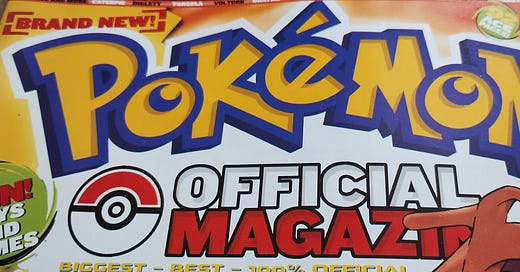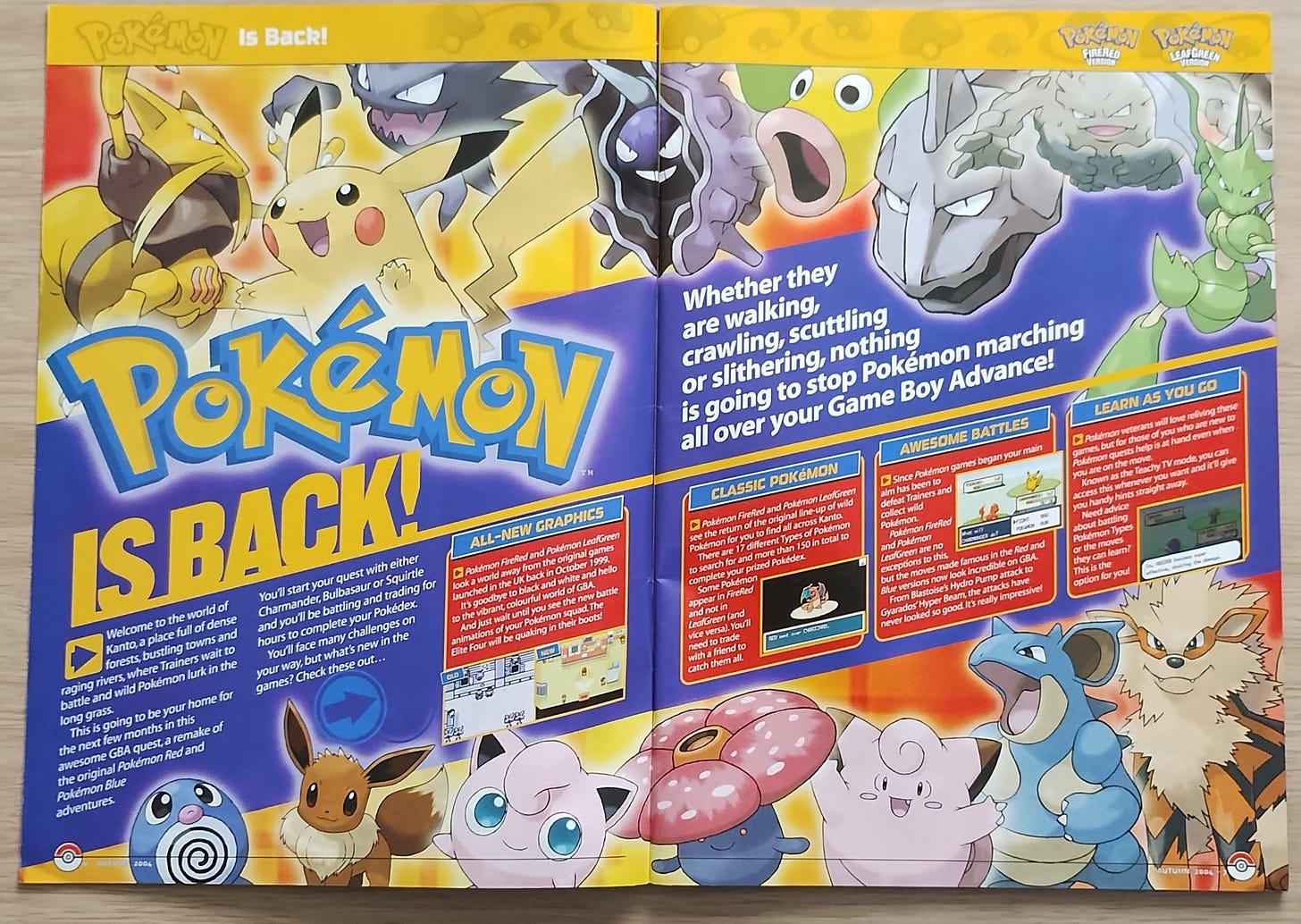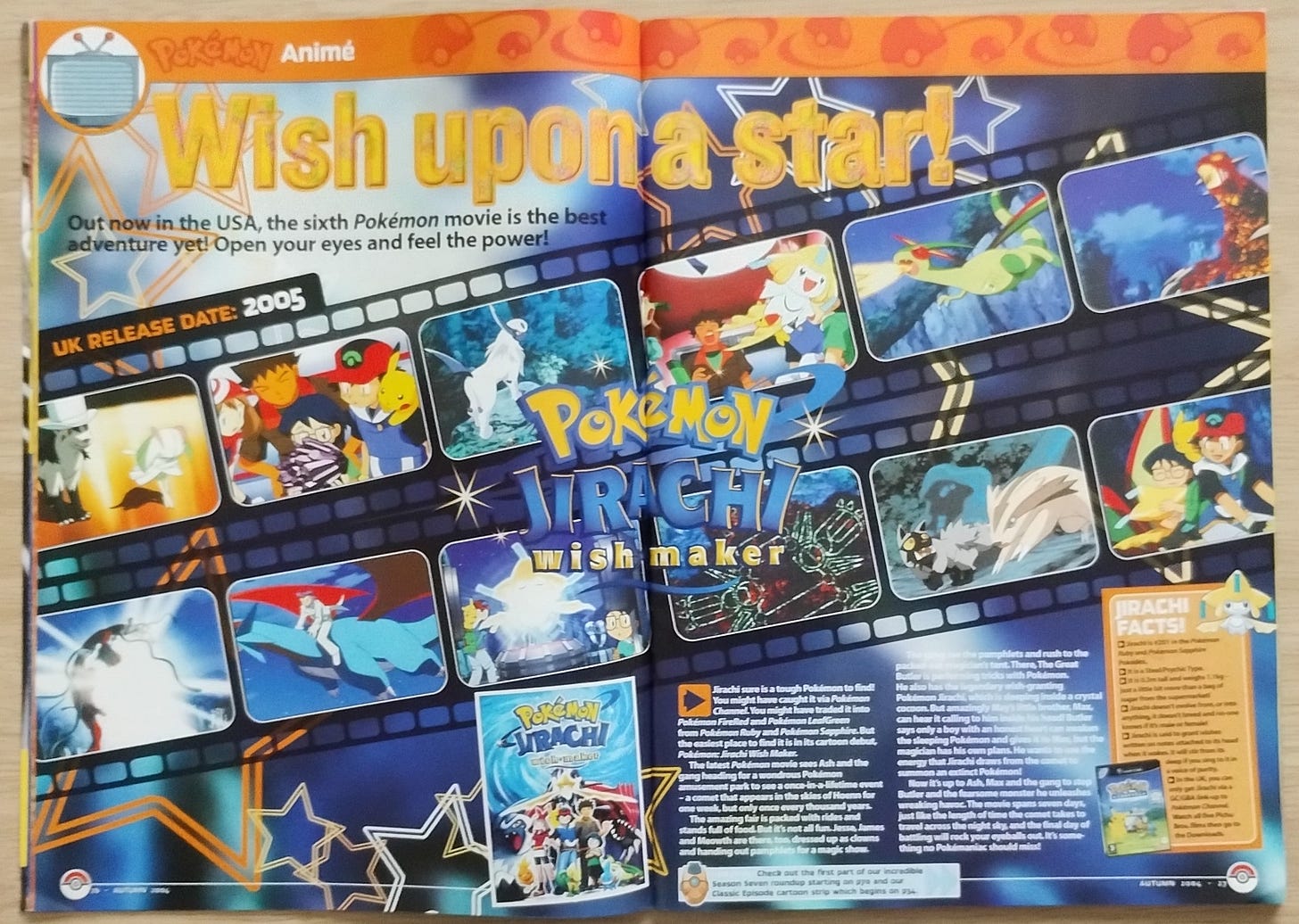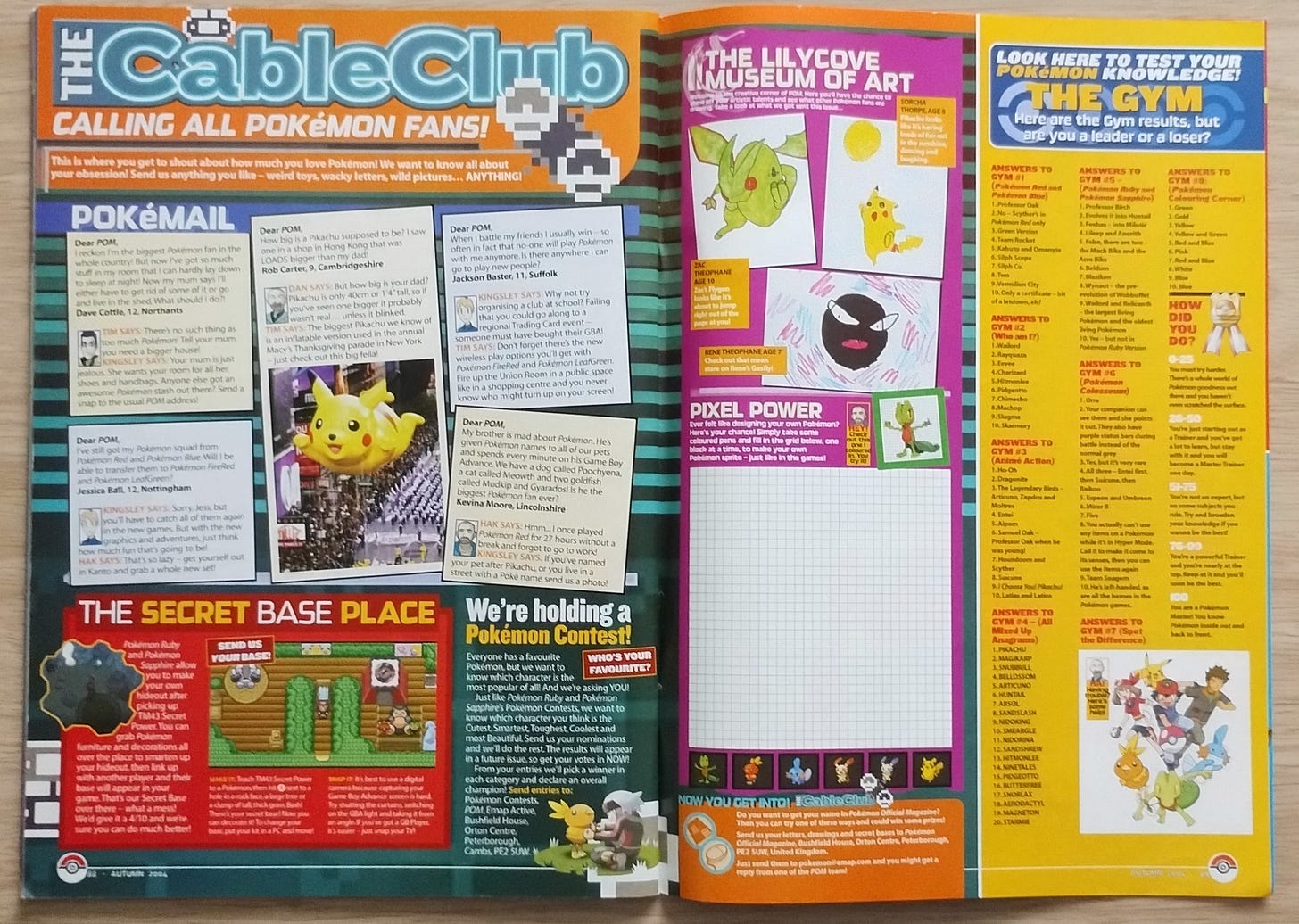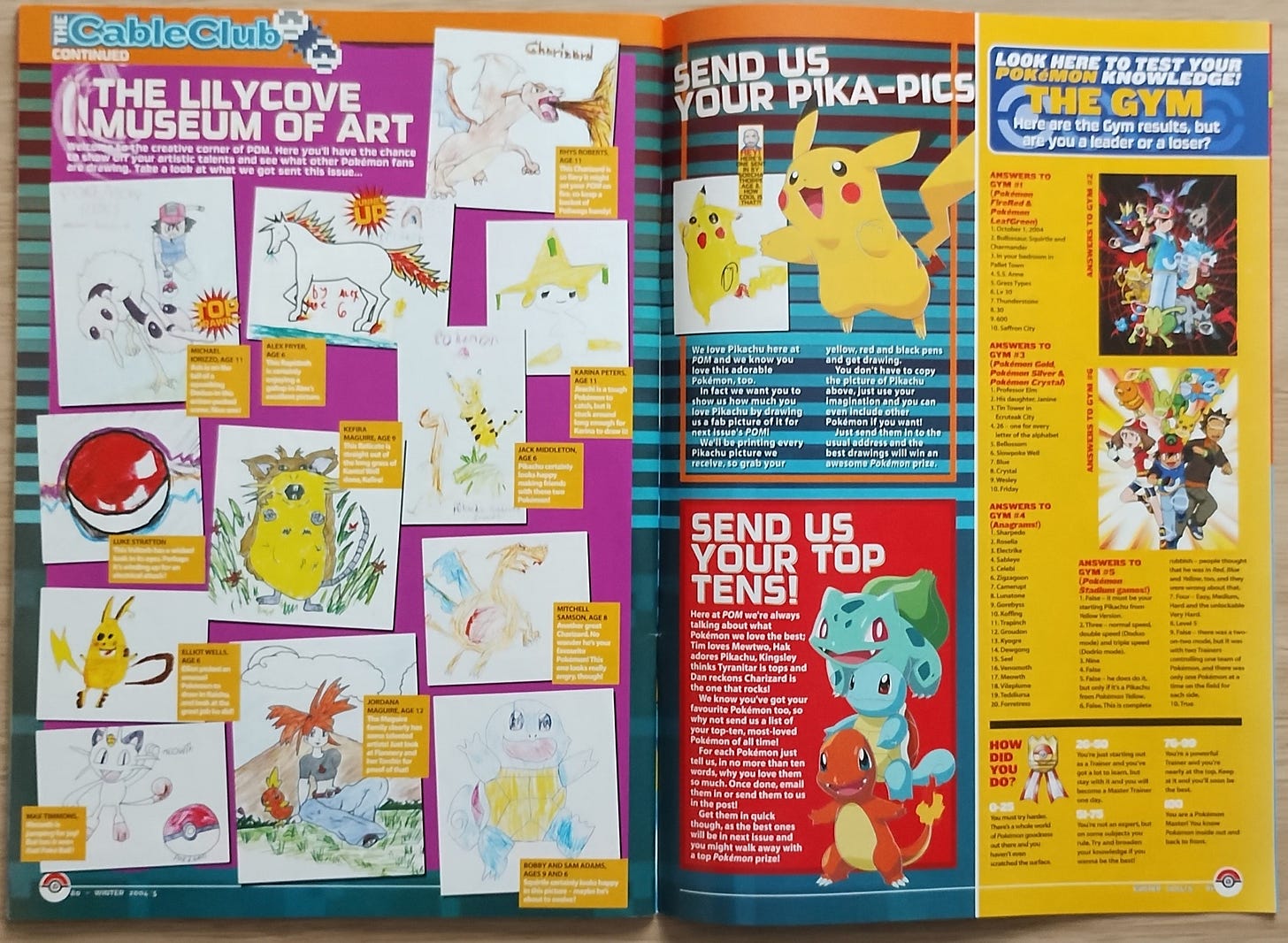Interview with Tim Street (Pokémon Official Magazine)
An interview with Tim Street, the Editor of Pokémon Official Magazine, published in the United Kingdom between October–December 2004
Tim Street was the former Editor of Nintendo Official Magazine (NOM), a British publication, between 2001 and 2005. In addition to this, he was also the Editor of Pokémon Official Magazine (POM), which ran between October and December 2004 in the United Kingdom. It was the first official Pokémon magazine in the country. I spoke to Tim, who shared his thoughts and memories on the magazine, its short life, and why he ultimately decided to leave the industry.

Thanks for agreeing to this interview, Tim! Can you start by introducing yourself to our readers?
Tim:
Well, a huge hello to all your readers and fans of Pokémon – it's good to have so many fans still enjoying the adventures. My name is Tim Street and I was the editor of Pokémon Official Magazine back in 2004, lasting just two issues, but more on that in a bit. As well as POM, I was editor of Nintendo Official Magazine from 2001 until the end of 2005.
Pokémon Official Magazine, the first of its kind in the United Kingdom, launched on October 1st, 2004. How did the idea for a Pokémon-focused magazine come to be?
Tim:
NOM had been huge supporters of Pokémon from the moment it launched in Japan and followed its phenomenal success very closely even from its early days, and we regularly reviewed the games, branded toys, and trading cards and provided tips for the games. In early 2000, under the previous editor Dave McComb's leadership, we teamed up with Topps Cards and toured the country playing Pokémon fans at Pokémon Red & Blue in a national arena tour as they tried to beat The Pokémon Masters, as we were called. We were signing Game Boys, cartridges, you name it.
We knew from the success of the tour and the support for pages like the Pokémon Centre in NOM that children were becoming massive fans of Pokémon. The cartoon was on SM:TV Live, a Saturday morning kids’ show at the time, and the magazine was being swept up in all things Pokémon.
Emap Active (now Bauer Media), which was the publisher of NOM, decided to launch a number of Pokémon 'one-shot' magazines from the launch of Pokémon Red & Blue up until Pokémon Crystal.These were essentially game guides to the Game Boy quests, but there were Monster Guides, reviews of other Pokémon games on the N64 and Pokémon merchandise. They were so popular that they had to be reprinted as we were selling in excess of 100,000 copies.
In 2003, the publisher (the position above an editor) of NOM was changed and handed to NOM's former editor, Andy McVittie. After Pokémon Ruby & Sapphire on the cover of NOM became the biggest selling issue of NOM for a number of months, we started to explore the idea of producing another one-shot for Pokémon, though that never materialised.
Instead, we contacted 4Kids Entertainment in London, who worked on Pokémon licensed products, and discussion began about producing an official Pokémon magazine for the launch of FireRed & LeafGreen in 2004. After a number of meetings over a few months with the newly-created London branch of The Pokémon Company, we worked on producing dummy pages of an official magazine in the spring and early summer of 2004. If memory serves me correctly, we got the go-ahead from Japan to launch the magazine in October to coincide with the launch of the new games in the UK.
As an Editor, what were your responsibilities on POM?
Tim:
I was the link between The Pokémon Company, who signed off every page, and the magazine team, who were essentially members of the NOM team. Nothing was allowed to be printed unless it had been greenlit by The Pokémon Company.
Firstly, we had to get approval on the flatplan, an A4 document of what will be on every page, before anything could be designed using the brand's guidelines closely. Once that had happened, the pages were submitted for approval so I was closely watching the calendar and tracking back from print deadlines to The Pokémon Company's deadlines and ensuring everything was done on time, which takes a while with a much-loved brand like Pokémon.
The magazine was packed with information, including information on the Pokémon video games, trading card game, anime, puzzles, competitions, and a mailbag. How did you determine the content a magazine like POM would cover?
Tim:
The Pokémon Company allowed us the opportunity to make it a Pokémon-centred magazine with a NOM feel. We had to tread carefully and couldn't overstep the mark, much like we couldn't with Nintendo products, but in essence we wanted to report on more than just the video games. For example, the different art styles on Pokémon trading cards.
It would be interesting to learn more about how the magazine functioned behind the scenes! What would a typical day look like for you and the team working on a magazine like POM?
Tim:
What you have to remember is that we were making POM alongside the monthly Nintendo magazine so we were essentially producing it in our own time. Throw into the mix that we'd just come off the back of relaunching NOM and there were many stressed out people during those summer months.
From what I recall, we were producing POM after hours and as we got closer to the deadline and sending the pages to print I remember we pulled an all-nighter just to get the magazine out the door. It was a very trying time.
Working into the night sounds like quite an extreme decision to take, especially when many members of the team were already stressed out! How common was that practice?
Tim:
Extremely rare and something we just did to get it done. I think even that was asking too much of the staff, despite the fact we were friends outside work.

Since you were working on magazines that were officially representing Nintendo and Pokémon, I am interested to know more about those collaborations. What was the communication like between the magazine and the companies you were writing for?
Tim:
When I was editor of NOM and POM, the internet was really starting to take off after the initial online bubble had burst. Magazine publishers were slowly getting their head around it, but we knew if we wanted to stay afloat we had to break news, rather than report on what had already been published quickly online.
As official publications of Nintendo and Pokémon, we had to keep the company line and ensure that news stories came from official sources and not report on rumours, otherwise that would look like it was official news when it could be a load of nonsense. We just had to be careful.
We had regular dialogue and meetings with both Nintendo and The Pokémon Company to plan ahead and try to obtain exclusive news. I remember, from talking to The Pokémon Company, they had a timeline of when they wanted stories to appear. For example, we couldn't report on characters from games that hadn't been released yet, or for example that Deoxys was hidden in Pokémon [FireRed & LeafGreen] as that would come in a later issue when TPC were ready to release it.
Magazines commonly provide free gifts, and POM was no exception! It offered fridge magnets, posters, a 3D Pokémon model, and pin badges! How did you decide on the types of gifts that are included with each magazine?
Tim:
We wanted to pack out each issue and even in early meetings with TPC we had already asked them for the digital versions of the Pokémon model which they were happy to oblige with. From what I remember, the rest came from the usual supplier of NOM gifts.
POM included lots of fan art, letters, and photographs of personal collections from fans. How did you decide on the types of content that would be published in the magazine?
Tim:
Having NOM alongside POM was a great help as we were able to use submissions to NOM and hold them for the two issues of POM. I think we also asked staff at Emap who had children to draw some pictures for us, too!
Unfortunately, Pokémon Official Magazine was only published for two issues on October 1st and December 2nd, 2004. Can you tell us more about the reasons and decisions that led to the magazine ending?
Tim:
I can't quite remember when it was but Andy was replaced as publisher of NOM with a man called Alan Morrison, who was the publisher of MATCH magazine, the biggest-selling weekly football magazine for children. When he came on board, they were looking at the number of sales of POM. I seem to recall we put out 25,000 copies of each issue and they sold about 12-15k, I can't really remember. The management's argument was that they weren't making much from advertising due to it being out every other month. In Alan's words, and I can still hear him saying it now, it was 'haemorrhaging money', so they decided to end it after two issues.
For me, it was one of my biggest regrets during my time on NOM and POM. The fact that Pokémon Magazine even today is still selling enormously well is testament to the fact that lovers of the franchise may have grown up but they'll still love it, probably along with their children, too.
What do you believe were the reasons why the magazine sold below expectations?
Tim:
It was promoted on TV from what I recall and across Bauer’s youth portfolio and titles that were read by parents. I think 4Kids helped us to advertise the title, too.
Publishers would always print more copies than they would sell. It might look like it undersold drastically, but we went for what was called a ‘soft launch’, treading carefully and not throwing tons of money at it in case it didn’t work. It’s hard to give exact reasons, but I think the bimonthly decision meant it couldn’t gain traction.
If I was doing it again, I probably would have bagged it with NOM for a few months, [got] a feel for what the market thought and [made] a decision from there.
A third issue of POM (to release on March 31st, 2005) didn’t make it to newsagent shelves. Issue 2 gave an indication of what the magazine would include, such as information on Nintendo DS, Pokémon Dash, posters, information on the Pokémon anime “Advanced Challenge”, and more free gifts as standard. What can you tell us about this issue that was never released?
Tim:
Well, I can tell you that it was definitely going to happen at the time of going to press with issue two, but unfortunately never saw the light of day with the management's decision. I can still see the Pokémon Dash cover now, and it's such a shame that it never came to light. I just think it would have snowballed from there, and we could have had a monthly magazine on our hands. I know one of the gifts we were keen on doing was DS decals on Dash, and we were making enquiries about some sort of inflatable of a Pokémon's head, Pikachu or Meowth or something, but sadly that never happened.
I imagine the goal of the project was to last more than three issues, so I am curious to learn what the long term goal of the magazine was going to be, and how long it was expected to last for. What do you recall?
Tim:
Well, as you can tell, I really didn't want it to end after just two issues. I don't know how much dedication from the NOM staff there would have been to doing more and more issues, as it was such a large project that it needed a dedicated team on it. Quite whether the powers that be would have gone for that, I guess we'll never know. Maybe we could have scaled back to the one-shot format that had served us so well in the past.

POM was a brand extension to Nintendo Official Magazine, which ran between March 1997 and February 2006. You were the Editor of NOM between 2001 and 2005. What are some of your memories of your time working on that magazine?
Tim:
I do look back with fondness at my days on NOM. It was a bunch of young lads playing and enjoying video games - their love of Nintendo and the excitement that came with it. I didn't so much relish the role of overseeing a team as I was a young editor - I was only 25 when I took on the job. I'd do it differently if I had my time again. It was difficult pleasing the team, who wanted to break news rather than just report it, but I learnt a lot as a manager. Even though I don't play games as much as I used to, I still love Nintendo to this day, and it played a huge part in my life.
What were your reasons for leaving the industry?
Tim:
Ahead of E3 2005 we knew that the current official licence from Nintendo was coming to an end at the end of the year and so we had to work on a pitch, in other words what NOM would look like from early 2006 onwards. We worked on the look of the magazine and some of the online offering, though the license was awarded to Future Publishing. As a result there wasn't an Emap Nintendo magazine after December 2005, so we were out of a job.
I moved across to work as the Website Editor at MATCH Magazine in January 2006, which evolved into a Special Projects role - overseeing football one-shots, holiday specials, the MATCH annual and a one-off official England magazine called 3 Lions, as well as pages in the weekly magazine. After trying and missing out on the Editor role on MATCH, I decided that my days in youth publishing were drawing to a close.
I tried vacancies in the book publishing industry and was down to the last two [candidates] for the editorship of the official Chelsea Magazine (not my team, by the way!) but decided to end my career in journalism. I'd often thought about a career in teaching and decided to retrain in primary education in September 2013 and entered the profession a year later. I've been at the same school ever since. But who knows? I'd love to get back to some form of writing, whether that be a video game slant or one with more of an educational angle. Watch this space!
Here's an idea! How do you feel about the idea of writing a book about your experiences in the games industry?
Tim:
Maybe that’s an opportunity worth pursuing. It’s been a while!
For many years, there has been a decline in print media, with many video game-focused magazines disappearing from shelves and shifting to online. As someone who held a significant role in the industry, what are your thoughts on this change?
Tim:
It was inevitable, really. I still think there is a role to play for niche titles - I still pick up Retro Gamer from time to time - and publishers make bespoke books and one-offs with that coffee-table feel, which look incredible.
What are your thoughts on the future of print media, video game journalism, and the industry as a whole?
Tim:
As long as people have a different story to tell I'm sure there will be a market for it, however small. It's just about getting your title known and mentioned online. Also, whether you can sustain it as a way of making money.
Since POM ended in 2004, Pokémon continues to thrive, with many more video games, a thriving trading card game, and hundreds of new Pokémon characters. What are your thoughts on the success that Pokémon has gained since the days of POM?
Tim:
It just shows no sign of slowing down, doesn't it? It's like Disney, Marvel, Harry Potter, LEGO or other brands that transcend age groups and genders. People love it and Pikachu's face is as famous as the biggest animation characters in history and that's great. Long may it continue.
Tim, it has been a pleasure speaking with you! Do you have any closing comments you would like to make to readers of Pokémon Official Magazine, Nintendo Official Magazine, and the Johto Times?
Tim:
I guess for POM readers, I'm sorry we didn't create more issues. For NOM readers, thank you for sticking with us during the leaner N64 and GameCube eras. It's a shame we couldn't carry that into the Wii and Switch renaissance of Nintendo, but it was great while it lasted. And to readers of Johto Times, thanks for giving me the opportunity to reminisce. It's been a pleasure and I'll be checking out the website a bit more often.
Special thanks to Tim for taking the time to speak to me about his role in Pokémon Official Magazine and answering some questions that I have been curious about for so many years. I am sure if the magazine had continued to be published, I would have picked up every issue!
Interview conducted on April 10th, 2024
Interview published on June 6th, 2024


